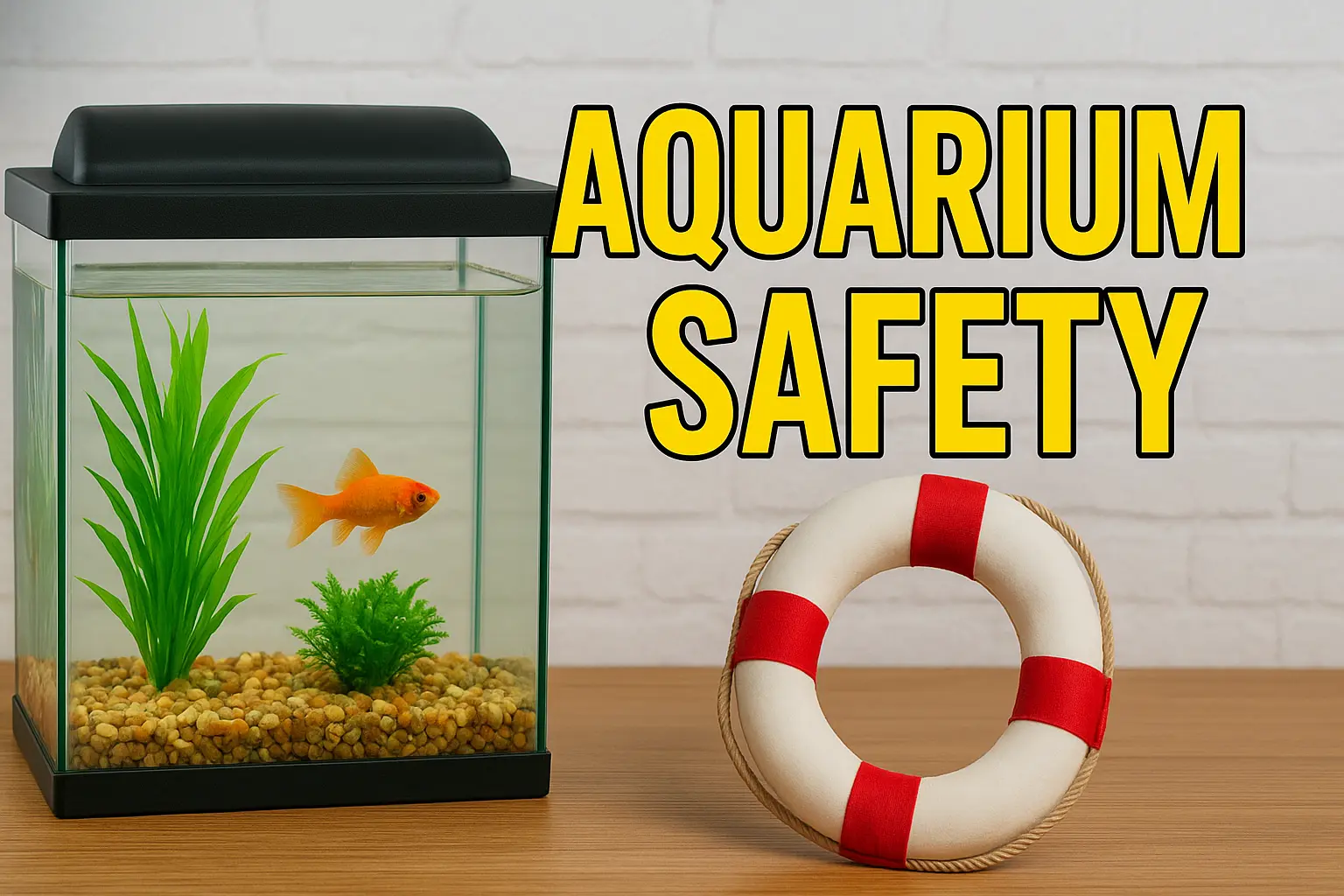Aquariums bring peace, beauty, and life to any space, whether at home, in an office, or in public settings. Watching fish swim gracefully among plants and decorations can be relaxing and therapeutic. However, owning an aquarium comes with responsibilities beyond just feeding fish and maintaining water quality. Aquarium safety is one of the most important yet often overlooked aspects of fishkeeping.
Proper aquarium safety ensures the well-being of the fish, protects the aquarist, and prevents accidents in your home. From electrical risks to water handling, and from fish health to tank stability, safety should always come first. In this article, we’ll provide an in-depth guide covering all aspects of aquarium safety, so you can enjoy your hobby with confidence.
Why Aquarium Safety Matters
An aquarium is more than just a decorative piece—it’s a functioning ecosystem that requires electricity, water, and living creatures to thrive. Without proper precautions, aquariums can pose several risks:
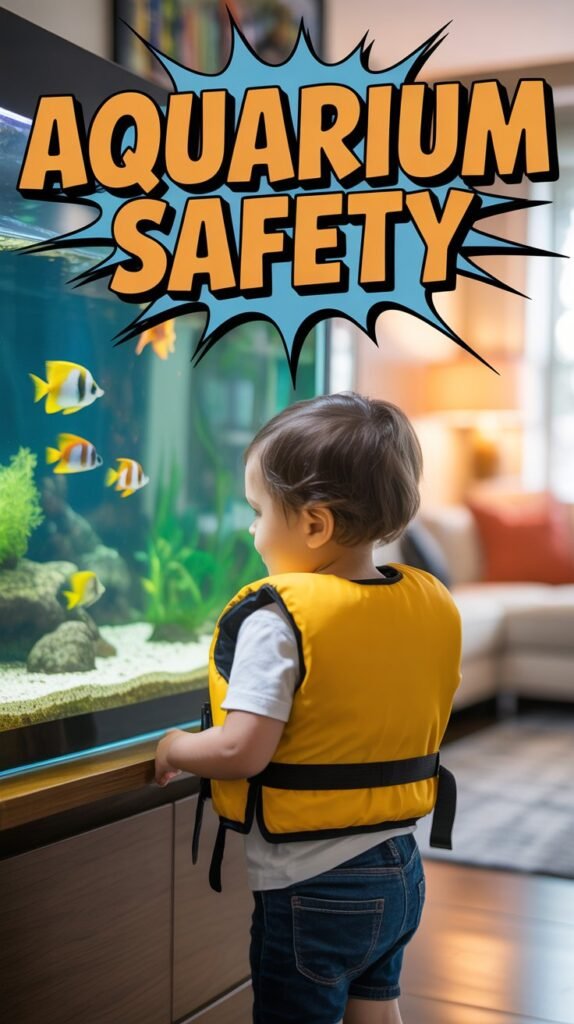
- Electrical hazards: Water and electricity don’t mix. Improperly installed equipment can lead to shocks or fires.
- Structural risks: Aquariums are heavy; an unstable setup can cause the tank to fall or crack, spilling water and harming fish.
- Health concerns: Handling aquarium water or sick fish without precautions can lead to infections or allergic reactions.
- Fish welfare: Neglecting safety measures such as proper cycling, temperature control, or avoiding toxic materials can harm aquatic life.
By following aquarium safety practices, you create a secure environment for both your pets and yourself.
Electrical Safety in Aquariums
Aquariums require multiple devices such as filters, heaters, pumps, and lights—all of which are powered by electricity. Since these are in close contact with water, extra caution is essential.
Key Electrical Safety Tips:
- Use Drip Loops: Always create a drip loop in power cords so that water cannot run down the cable into the outlet.
- Install a GFCI Outlet: A Ground Fault Circuit Interrupter (GFCI) prevents electric shock by shutting off power if water comes into contact with electrical current.
- Keep Power Strips Elevated: Avoid placing power strips or extension cords on the floor where water might spill.
- Check Equipment Regularly: Inspect heaters, filters, and lights for cracks, frayed cords, or other damage.
- Unplug Before Maintenance: Always unplug electrical devices before cleaning or rearranging the tank.
Safe Tank Placement
Where you place your aquarium can determine its safety and longevity. Since aquariums are heavy (a 55-gallon tank weighs over 450 pounds with water), proper support is critical.
Guidelines for Safe Placement:
- Choose a sturdy stand built specifically for aquariums. Avoid furniture not designed to hold heavy loads.
- Level the surface to prevent stress on the glass, which can lead to cracks.
- Keep away from direct sunlight to avoid overheating and algae growth.
- Avoid high-traffic areas where the tank could be bumped or knocked over.
- Ensure proximity to outlets while keeping cords neat and elevated to avoid tripping hazards.
Water Safety and Handling
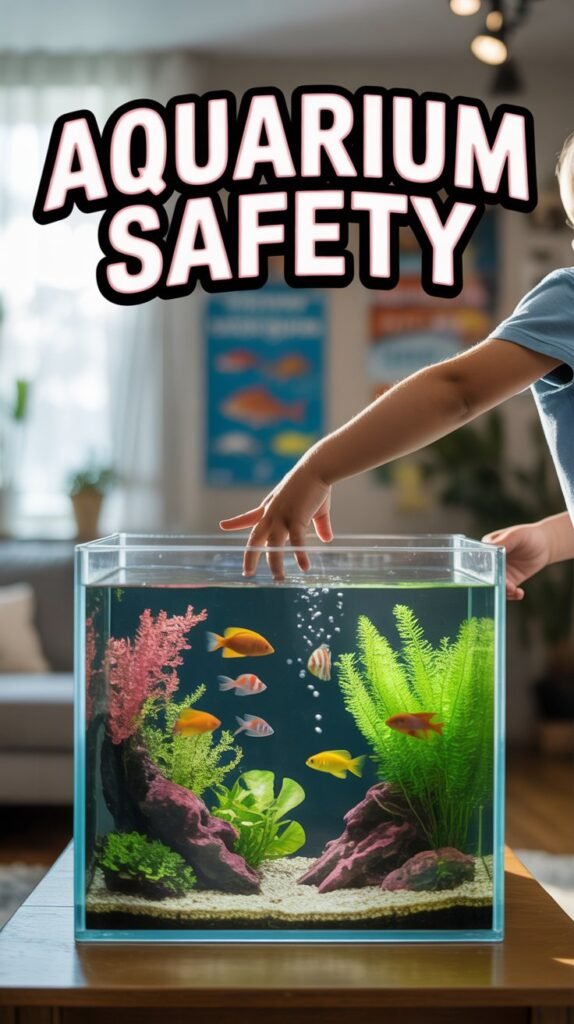
Water changes are essential for maintaining water quality, but improper handling can lead to spills, accidents, or contamination.
Safe Water Practices:
- Use proper containers (buckets or hoses designated for aquarium use only). Never use soap or chemicals in them.
- Wipe up spills immediately to prevent slipping and floor damage.
- Dechlorinate tap water before adding it to the tank.
- Match temperature when refilling to avoid shocking your fish.
- Store chemicals safely (water conditioners, medications, fertilizers) away from children and pets.
Fish Safety and Welfare
Your fish’s safety is just as important as your own. A safe aquarium environment ensures healthy, stress-free fish that thrive for years.
Ways to Keep Fish Safe:
- Cycle your tank properly before adding fish to prevent ammonia poisoning.
- Avoid overstocking to reduce aggression and stress.
- Provide hiding spots with rocks, plants, or caves.
- Quarantine new fish to prevent disease introduction.
- Maintain stable water parameters (temperature, pH, hardness, ammonia, nitrite, and nitrate levels).
Aquarium Glass and Structural Safety
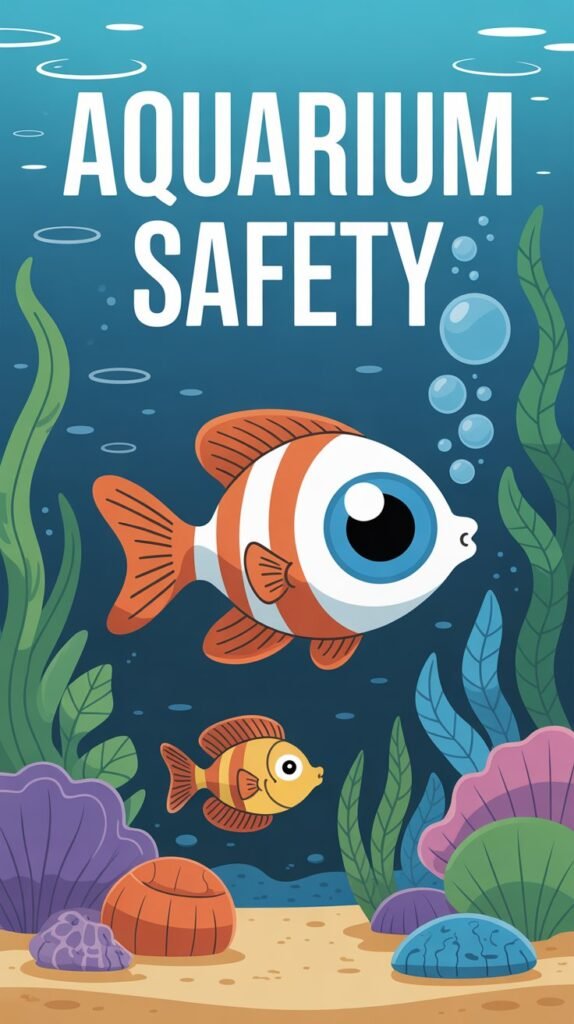
Aquariums are typically made of glass or acrylic, both of which need careful handling.
Safety Precautions:
- Check for cracks or leaks before setting up.
- Avoid placing sharp objects near the tank.
- Use aquarium-safe adhesives and sealants when fixing decorations or repairing leaks.
- Never move a filled aquarium—always empty it first.
- Keep children and pets away from climbing on or bumping the tank.
Safe Use of Aquarium Equipment
Filters, heaters, and other devices keep your aquarium running smoothly, but they must be used safely.
- Heaters: Always submerge fully (unless designed otherwise), and allow them to cool before removing from water.
- Filters: Clean them regularly, but avoid washing with soap—use tank water instead.
- Lights: Use aquarium-safe fixtures with timers to prevent overheating.
- Air pumps: Keep them above water level or use check valves to prevent back-siphoning.
Chemical Safety in Aquariums
Aquariums sometimes require the use of water conditioners, fertilizers, or medications. While useful, they can be harmful if misused.
- Always follow dosage instructions carefully.
- Never mix chemicals unless advised by experts.
- Wear gloves when handling medications or cleaning agents.
- Store out of reach of children and pets.
- Use aquarium-safe products only.
Personal Safety While Handling Aquariums
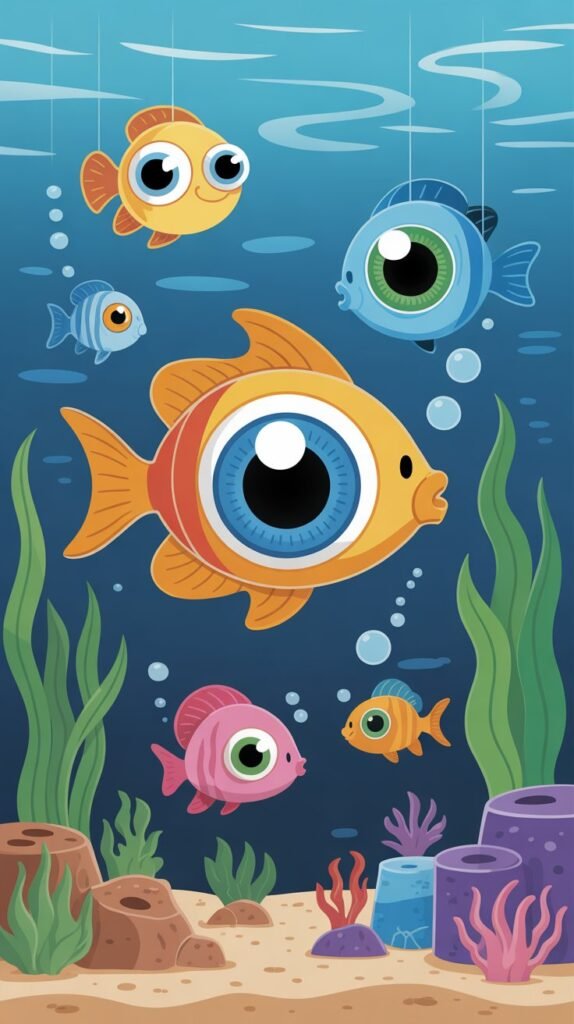
Fishkeepers often overlook their own safety, but handling aquariums can expose you to risks like cuts, infections, or strains.
- Wear gloves when cleaning or handling fish.
- Wash hands thoroughly before and after tank maintenance.
- Avoid using household cleaners near the tank to prevent toxic fumes or spills.
- Lift carefully—ask for help when moving heavy tanks to avoid back injuries.
- Be cautious with aggressive species (some may bite or sting).
Fire and Flood Prevention
Improper aquarium setup can cause fires or flooding in your home. Preventive measures are essential.
- Check cords and plugs regularly for wear.
- Keep towels handy for quick spill cleanup.
- Never overfill tanks—leave space for water displacement.
- Use surge protectors for electrical devices.
- Install alarms (smoke and water sensors) near large aquariums for added safety.
Teaching Aquarium Safety to Kids
If you have children, aquariums can be a fun learning tool, but safety should be emphasized.
- Teach them not to tap the glass or put hands in the water.
- Keep chemicals, fish food, and tools out of reach.
- Supervise them during feeding or maintenance.
- Encourage respect for fish as living creatures.
Long-Term Aquarium Safety Maintenance
Aquarium safety isn’t just about the initial setup—it requires continuous care.
- Perform regular inspections of tank, equipment, and water.
- Replace worn-out parts (heaters, bulbs, filter media).
- Keep a logbook for water tests and maintenance.
- Stay informed about fish diseases and treatments.
- Always be prepared with a backup plan (battery-operated air pumps during power outages).
Conclusion
An aquarium is a rewarding hobby that brings beauty and tranquility, but it must be approached with responsibility. Aquarium safety is about protecting your fish, your equipment, and yourself. By following guidelines for electrical safety, tank placement, water handling, and fish welfare, you can enjoy your aquarium without worry.
Remember: prevention is always easier than fixing problems later. A safe aquarium is a successful aquarium.
FAQs about Aquarium Safety
Q1. Can an aquarium cause an electric shock?
Yes, if equipment is faulty or improperly installed. Always use GFCI outlets and check cords for damage.
Q2. Is aquarium water dangerous to touch?
Generally no, but it can carry bacteria or parasites. Always wash hands after handling.
Q3. How do I prevent my aquarium from leaking?
Use a quality tank, check seals regularly, and avoid uneven surfaces or heavy impacts.
Q4. Can aquarium lights cause a fire?
If left on too long or used with faulty wiring, yes. Use timers and check fixtures regularly.
Q5. Should I wear gloves when cleaning my aquarium?
Yes, gloves protect both you and the fish by preventing contamination and reducing infection risks.
Q6. What’s the safest way to move an aquarium?
Always empty it first, remove decorations, and lift with help to avoid strain or accidents.
Q7. How do I keep kids safe around an aquarium?
Supervise them, keep chemicals out of reach, and teach them not to tap or touch the tank.

